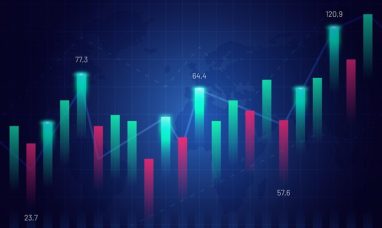The national debt of the United States has been a topic of intense discussion and concern. As the national debt continues to grow, the question of who will bear the cost of addressing this financial burden becomes increasingly critical. This article explores the various aspects of the national debt, including potential solutions and the stakeholders involved.
Understanding the National Debt
The national debt of the United States has reached unprecedented levels. According to the U.S. Treasury, the total national debt surpassed $30 trillion in 2022, a figure that has continued to climb. This growing debt is a result of various factors, including increased government spending, tax cuts, and economic stimulus measures designed to combat financial crises.
Impact on Future Generations
One of the primary concerns regarding the national debt is its impact on future generations. As the debt grows, the burden of repayment falls on future taxpayers. This could potentially lead to higher taxes and reduced government services, affecting the quality of life for future Americans. The Congressional Budget Office (CBO) has warned that the rising national debt could lead to slower economic growth and increased interest costs, which would crowd out other important government spending.
Who Will Bear the Cost?
The responsibility for addressing the national debt falls on various stakeholders, including the federal government, taxpayers, and future generations. The federal government can implement measures such as spending cuts, tax increases, or a combination of both to reduce the debt. However, these measures often face political resistance and can have significant economic implications.
Taxpayers are another group that will bear the cost of reducing the national debt. Higher taxes could be implemented to generate the revenue needed to pay down the debt. This approach, while effective in theory, can be politically challenging and economically disruptive.
Future generations will also bear the burden of the national debt. As the debt continues to grow, they will face the consequences of higher taxes and reduced government services. This underscores the importance of finding sustainable solutions to the national debt problem.
Potential Solutions
Several potential solutions have been proposed to address the national debt. These include:
- Spending Cuts: Reducing government spending is one way to address the national debt. This could involve cuts to discretionary spending, such as defense and social programs, as well as entitlement reforms.
- Tax Increases: Increasing taxes is another approach to generate revenue for debt repayment. This could involve raising income taxes, corporate taxes, or introducing new taxes on wealth or consumption.
- Economic Growth: Promoting economic growth can help increase government revenue and reduce the debt-to-GDP ratio. Policies that encourage investment, innovation, and job creation can contribute to a stronger economy and improved fiscal health.
- Debt Restructuring: In extreme cases, the government could consider restructuring its debt. This could involve negotiating with creditors to extend repayment terms, reduce interest rates, or even forgive a portion of the debt.
The Role of Policymakers
Policymakers play a crucial role in addressing the national debt. They must balance the need for fiscal responsibility with the demands of their constituents. This often involves making difficult decisions about spending priorities, tax policies, and economic strategies. Effective leadership and bipartisan cooperation are essential for developing and implementing sustainable solutions to the national debt problem.
Conclusion
The national debt of the United States is a complex and pressing issue that requires attention and action from all stakeholders. As the debt continues to grow, it is crucial to find sustainable solutions that balance fiscal responsibility with economic growth and social well-being. Addressing the national debt will require difficult choices and shared sacrifices, but it is essential for the long-term health and prosperity of the nation.
Featured Image: Freepik © freepik







